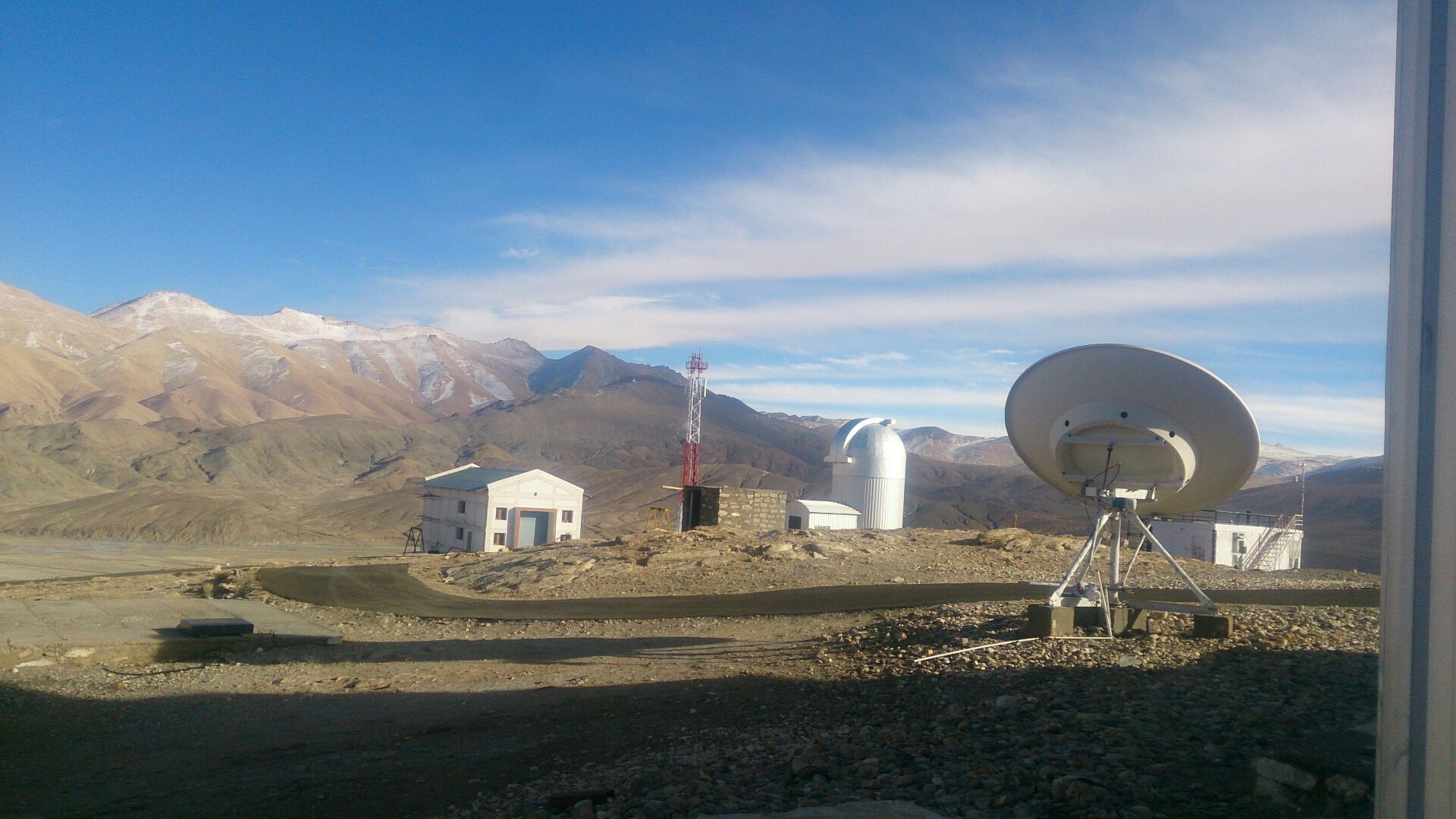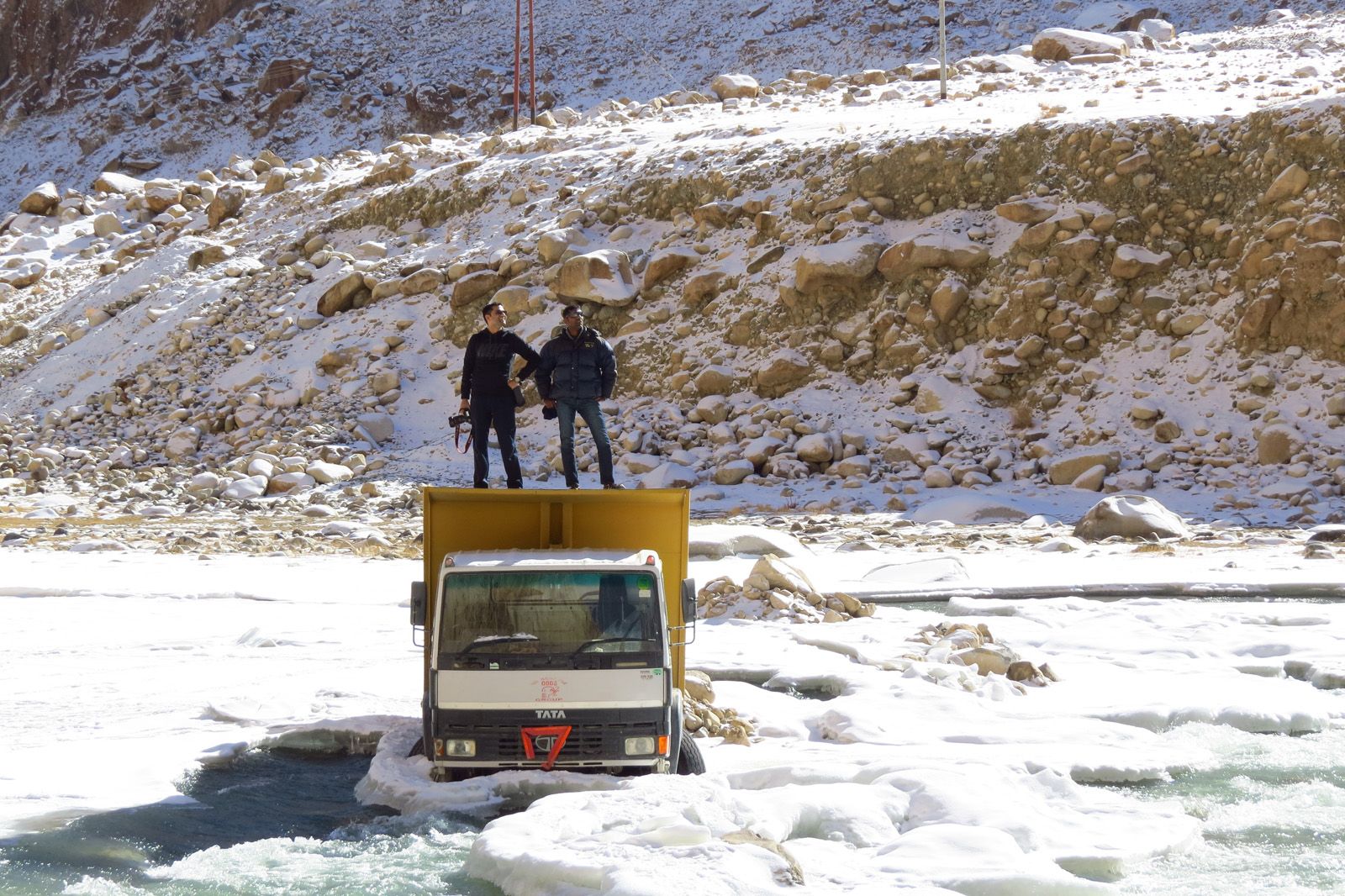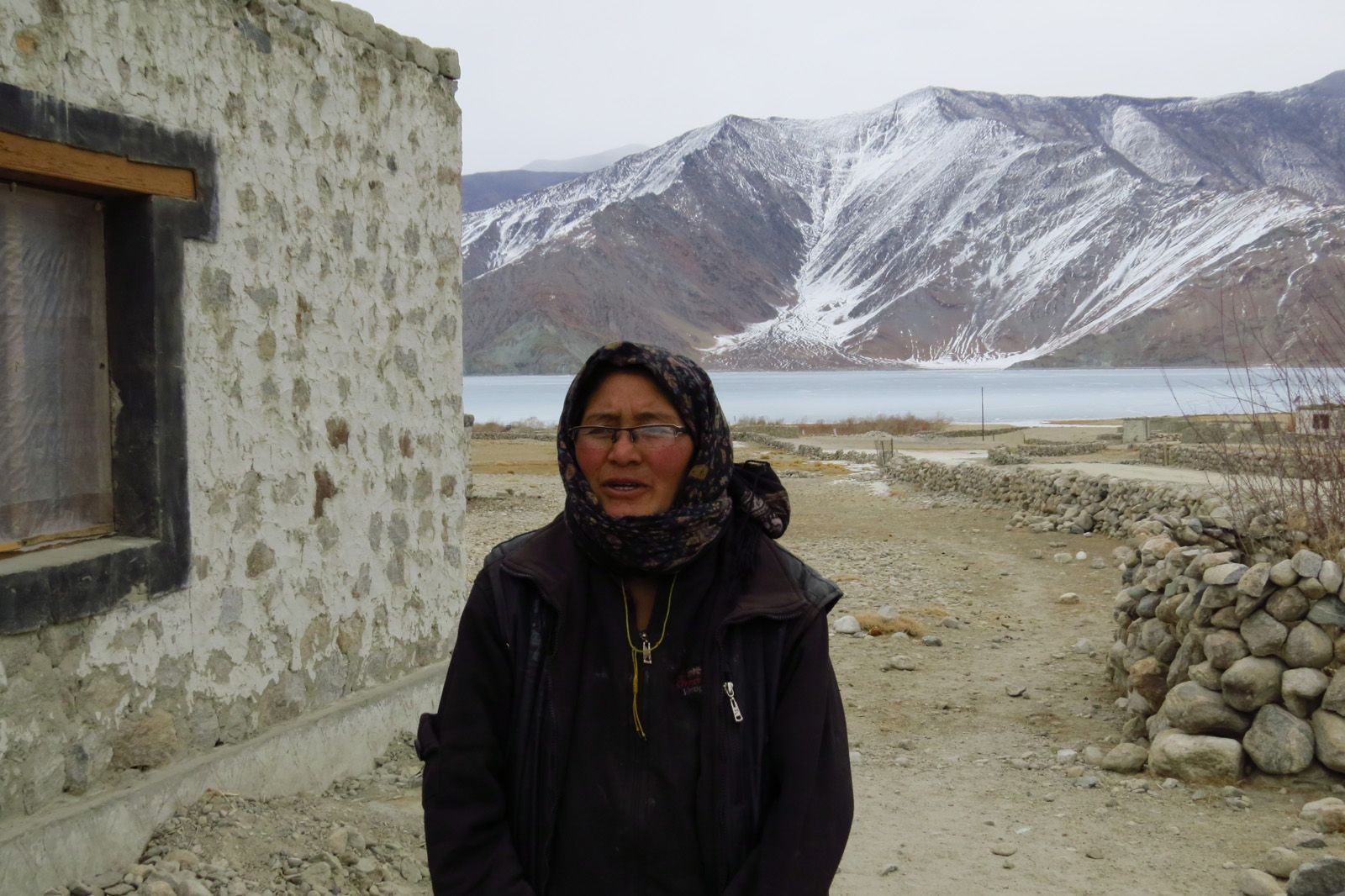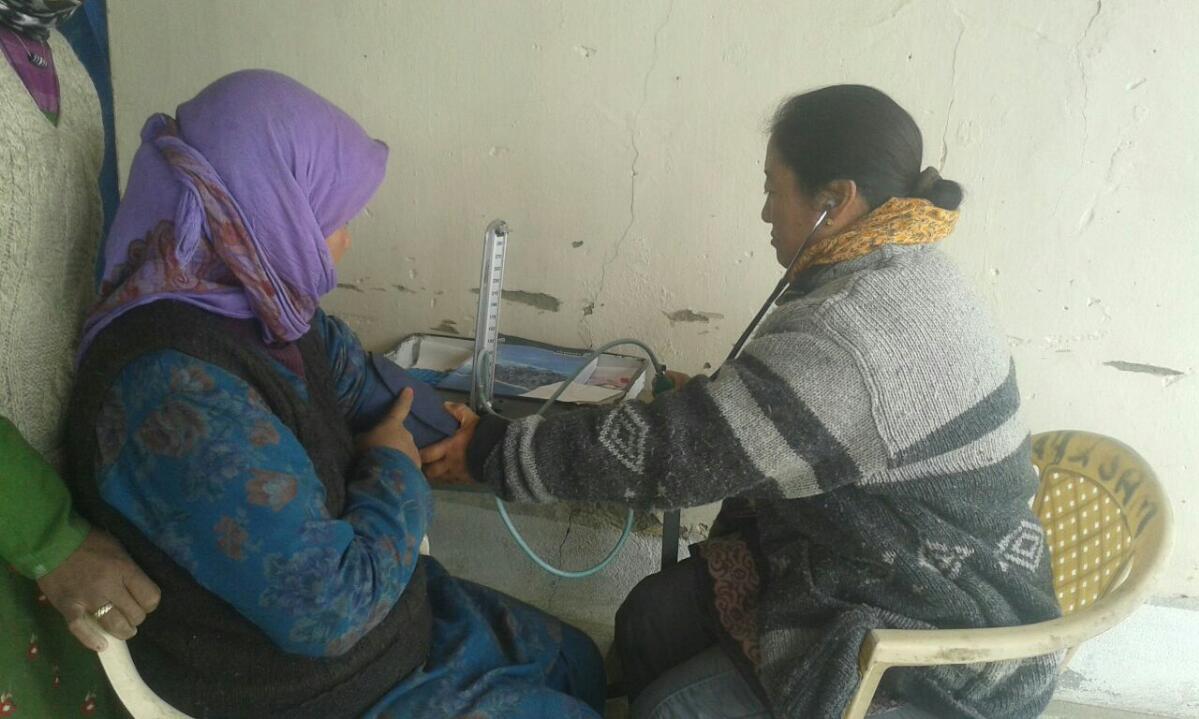Piolets d'Or Announces the "Significant Ascents" of 2023
This list of 68 climbs is effectively a "long list" used to select nominees of the prestigious alpine award.

Camouflage, guns dot the landscape
Tso Moriri (Tso means lake in Ladakhi) is the largest high-altitude lake in India thatis entirely in Indian Territory at about 4595 mts (15,075 ft). The alkaline water body has no outlet and is 29 kilometers long and up to eight kilometers wide. Being the highest Ramsar site in the world, it also attracts a range of wildlife, including waterfowls, the Bar-headed Geese, the globally threatened Black-necked Crane (Grus nigricollis). In addition to that, this unique ecosystem also supports some of the most endangered species of mammals such as Kiang, Snow Leopard, Lynx, Tibetan Wolf, Himalayan Blue Sheep and Marmot.
Picturesquely located in secluded, breathtakingly beautiful Rupshu Valley, Tso Moriri Lake is around 250 kms southeast of Leh and hundreds of people visit it in the summer. But, in winter reaching the giant mountain lake itself is a gargantuan task. Tourists are not permitted to pitch tents or construct anything near the banks of the lake, which is renowned for its beautiful blue pallet in the summer. The stiff January wind aided by subzero conditions has an incredible effect on the frozen water body, with portions bearing a wind-carved effect. Often, mounds and long rifts appear abruptly on the surface, exposing levels of blue ice beneath.
Walking on this surface requires immense caution and attention. The best and perhaps safest way is to take a few slow steps and pace yourself accordingly. The idea is to walk in a dawdling fashion in the beginning by knocking the front end of the shoe into the ice surface scrupulously before taking the next step. But once the shoe sole has made friends with the ice then the glassy surface becomes the perfect surface for the 'moonwalk’.
On the fringes of the lake is the last post of the Indo-Tibetan Border Police (ITBP) where about 30 personnel maintain a 365-day vigil. “Why have you all come here in the winter? You should have come in the summer to see the beautiful multi-shades of blue offered by the lake and the sky. In winter the place is extremely harsh and difficult to survive, even for us. There is only one cemented accommodation available around the lake and facilities like electricity, medical aid, hot running water, western toilets etc. are rare to find. The lack of oxygen also makes survival difficult,” says a camouflage snowsuit-clad official who did not wish to be named.
There lay a bukhari inside the commanding officers hut to try and keep the soldiers warm. In addition to that, patriotic songs, letters from home and canned food are among the few things that tend to keep the high-altitude soldiers accelerated towards their task of keeping the mountain passes safe. Furthermore, despite all its resplendent beauty Ladakh falls under a rain shadow region and receives only 2 inches (5 cm) rainfall annually. The most shared chore in a Ladakhi household is fetching adequate water that could run a day in a family of four. It is a daunting task in the winter. With icicles dangling from almost every hand pump on the countryside and water freezing in buckets within hours, villagers queue for water tankers or resort to melting ice from the surroundings to drink, bathe, complete household chores and quench the thirst of their cattle. It’s an uncomfortable but common sight to watch the locals, across age, carry jerry cans filled with water walk in a duck like gait as they catch their breath at such high altitudes. This after standing in queue for the municipality provided tanker that brings them their supplies at far-flung corners of the desert region.
The tireless nature of Ladakhis is an axiom evident from the verdant oases --- terraced fields of barley, wheat, apples, apricots, and vegetables, irrigated with glacial melted water brought many miles through stone-lined channels --that have been made from barren desert. "The value of water for us is much more than what city-dwellers can imagine. It hardly ever rains here, we have to depend on underground water or it should be supplied by the government.
Due to inadequate vegetation in this region we don’t even have enough wood to melt ice. We have to depend on cattle droppings as fuel,” says a resident of Nyoma town who lives amidst these hardships but has the privilege to boast about a house with a view that stares at a Buddhist monastery perched on a hill and an unbound blue sky.
After they’ve wrapped up the domestic tasks, the kids make a dash for a frozen rivulet and deploy their homemade ice skates, which are small blocks of wood strapped on to their knees. Using ice picks to gain traction, the children zip past each other on any frozen waterbody. Their wide grin reveals only fun in their engagement and no fear of the ice cracking beneath them.
The town has the Indus River nearby and is at hand (20 km) from the international border with China. It is also a critical base of the Indian Air Force with manned bunkers dug out almost out of sight on mountains.
Scaling dreams higher than means Ladakh has many sobriquets given by its travellers like 'The Moonland", 'Little Tibet', The Last Shangri La'; and one must be told that they are all true. Since the time it was discovered and gospel-like travelogues by early explorers about its unbound beauty and myriad hues, Ladakh has also been a lure for sky gazers and astronomers for the clear skies at night and unobstructed view of the constellations.

These were the very reasons behind choosing the enchanting village of Hanle in south-eastern Ladakh as the site for the world’s highest astronomical observatory. Perched at a staggering height of 4500 mts, Hanle is home to an optical, infrared and gamma ray telescope of the Indian Astronomical Observatory, the 17th century red hat monastery, a population of around 400 people and incalculable solitude all around it. It is also of strategic importance given its proximity to the fringes of China.
The Hanle village-folk are either farmers, defense personnel, road construction laborers or employees ofthe observatory. There’s just that much to do in this cold desert. Sonam Dorje is one of the few with dual occupation in this highly un-ambitious village. While he earns his salary working as a technical assistant at the observatory, his remunerative means are from running a home-stay for guests in the summer and winter.
The 'Padma home-stay’ follows the locally found architecture, single structure, with no more than three rooms that can fit three beds each and a hearth inside them. Sonam explains with diligence the weather outside in the day and night can range from -8 to -30 and warns us of the notorious wind speed that can touch 35-45 kmph. “Survival in Ladakh is all about how to stay warm. When you are outdoors most of you city folk manage to stay warm by wearing woolen layers and imported jackets. But indoors it is better to not wear so many layers and keep warm by the hearth. While sleeping at night if you don’t have a sleeping bag there’s a special technique we use to stay warm all night wearing only nightwear to bed,” says the affable character while simultaneously demonstrating by cocooning himself inside the double-layering of a Chinese-made blanket.
Though geographically in India, Ladakh’s trade depends heavily on Chinese goods. Two of the main things that keeps Ladakhi’s warm -- thermos flasks, blanket— are both of Chinese make and found in every household as they are easily smuggled across frozen water bodies.
Penetrating the remoteness, television and education of the 21st century has given kids like Tsopang, Sonam’s son, the ability to learn Punjabi rap songs and yearning to chart out a career as an astrophysicist. For Ladakhis, work is only a physical activity: plowing, walking and carrying things. This trait is evident in Tsopang, who is at the young age of only 10 years, as he struggles to bring a jerry can filled with water into the kitchen — the warmest room in the home-stay.
Ladakhi's adorn their kitchen wall with wooden racks lined with almost all the shiny utensils they have either bought or received as gifts in weddings and other festivals. Much of his rhinorrhea is rubbed on the sleeve of his colorful woolen jacket but Ladakhi people don’t need to pause a minute to catch their breath before smiling at a stranger. “I love Yo Yo Honey Singh's rap songs. I watch his songs on TV and I also like to watch shows about stars and the universe as I want to be an astrophysicist and work at my father’s office,” he says before darting to switch on the TV at 7 pm when the village gets its quota of 3-hrs of electricity daily.

A river that often floods its banks during the late summers, the Hanle River is a short left bank tributary of the Indus River. It rises in the snowy wastes on the northern slopes of the Zanskar range which is in eastern Ladakh. In the crisp of January, it is a thick sheet of ice that snakes away from the village settlements towards the mountain that houses the ghumpa. Winter break at the Buddhist scholastic center has sent the students away to their homes; while it is an invitation for avifauna like the desert
Wheatears, various waterfowl and the Black-necked crane make hay on the isolated frozen river. Among the many disputed territories India shares with China Pangong Tso is a 135 km brackish water body which mirrors its description in the regional language -long, narrow, enchanted lake. The endorthermic salt water basin situated at 14,270 ft (4,350 m) is a panoramic and disputed territory home to Bar-headed Goose and Brahmini ducks.
It is also where 33-year-old Sarita Longse lives with her family in Merak village round the year amid the rarefied air, sub-zero temperatures and benumbing wind. After the recent death of a teenaged boy who drowned when the ice cracked while he was playing ice hockey, she has warned her two sons aged 10 and 11 from walking or playing on the frozen lake.

"We were all shocked when we heard about the boy's death. His body has not been found yet. Ice hockey is among the few sports that children can play in winter but such incidents scare us from letting our kids play," she says leading the way inside her home, a wood and stone structure with musty air and dim light.
Her fear is not arbitrary. The closest civilian hospital is in Leh, a minimum five-hour road journey across mountain passes and walls of ice if the vehicle has not encountered an avalanche-created roadblock or stalled in a snow storm. Though in the sticks, the people of this region don't live in dismay because they are armed with subsistence. Over the years Pangong Tso's remoteness from civilisation has reduced due to its popularity among Indian tourists after a couple of Bollywood movies featuring star actors immortalised the lake as a summer destination.
A deserted white carpet in the winter, the fringes of this lake turns into a mini-carnival in the summer with tourist buses trooping down Indians from all corners of the country. Single-floor hotels and insulated tents that are devoid of activity in the winter are bustling with people in the warmer days that give business to the tea stalls, provision stores in the village.
https://youtu.be/jPbmXd20fIg
Every moment of the winter spent outdoors in Ladakh is a lesson in survival. And Dr. Mohammed Iqbal at the government medical dispensary in Tsantse village, around 250 kms form Leh, knows it a bit too well. A few day before the Indian Republic Day is celebrated his name was considered for an award given by the state government for outstanding medical service for saving a mother and child during a complicated delivery.

“A few days ago I got a maternity emergency call from a village 50 kms from here. The weather was inclement and she could not come to the dispensary for delivery. I dashed to the village with my jeep and an assistant and we managed to save the mother and newborn child. It took us a few hours and the road was covered in snow," the physician said waving a woman inside his clinic chamber.”
Distance, terrain, fierce weather, poor communication network, lack of manpower, shortage of medical facilities are some of the common factors that often come in the way of doctors trying to perform their duty in Ladakh. Till 2014, the entire supply of bottled oxygen for government run hospitals and dispensaries came from Chandigarh -- a city near Punjab, nearly 1,000 kms from Leh.
"Ladakh is an extreme region in every way. Be it the natural beauty, rarefied air or harshness of the terrain...it leaves you breathless," he quipped before pressing the stethoscope on the chest of a child in need of attention.
Photos & video by Priyanka Gera and Anil Nair.
2nd best newsletter in the universe